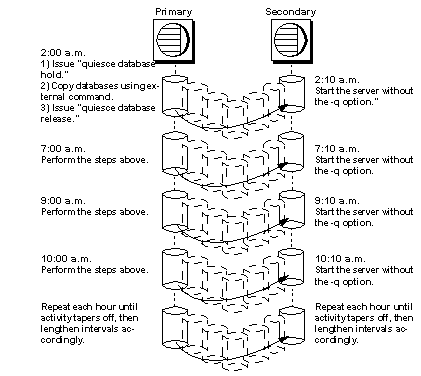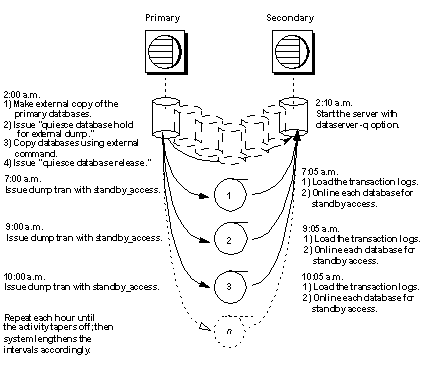Typically, users back up their databases with quiesce database using one of the following methods. Both allow you to off-load decision-support applications from the online transaction processor (OLTP) server during normal operation:
Iterative refresh of the primary device – copy the primary device to the secondary device at refresh intervals. Quiesce the database before each refresh. A system that provides weekly backups using this system is shown in Figure 11-6:
Figure 11-6: Backup schedule for iterative refresh method

If you are using the iterative refresh method, you do not have to use the -q option to restart the secondary server (after a crash or system maintenance). Any incomplete transactions generate compensation log records, and the affected databases come online in the regular fashion.
Warm standby method – allows full concurrency for the OLTP server because it does not block writes.
After you make an external (secondary) copy of the primary database devices using the for external dump clause, refresh the secondary databases with periodic applications of the transaction logs with dumps from the primary server. For this method, quiesce the databases once to make an external copy of the set of databases and then refresh each periodically using a dump tran with standby_access. A system that uses a daily update of the primary device and then hourly backups of the transaction log is shown in Figure 11-7.
Figure 11-7: Backup schedule for warm standby method
